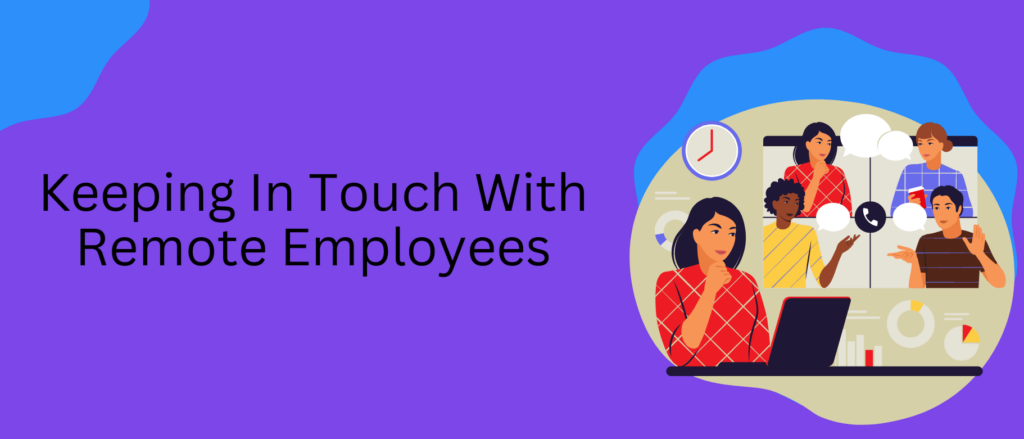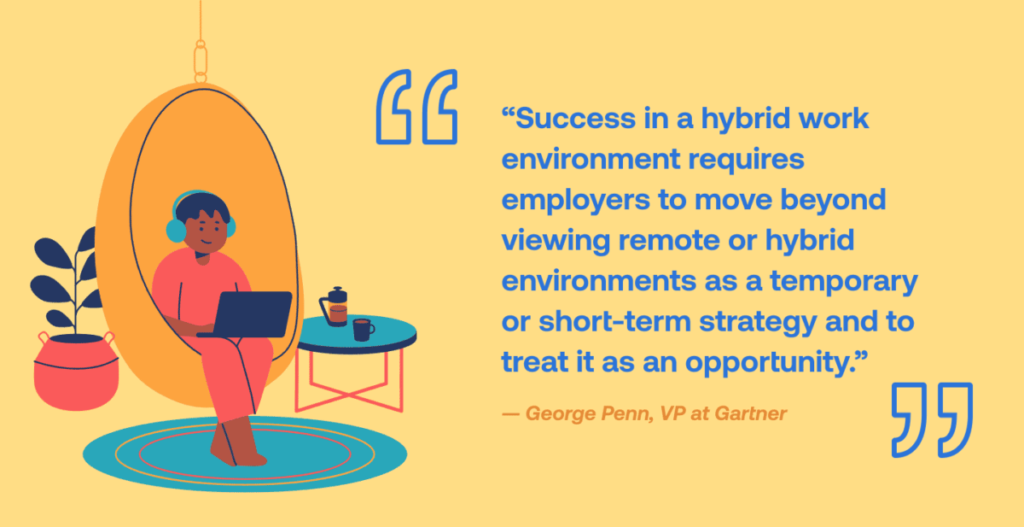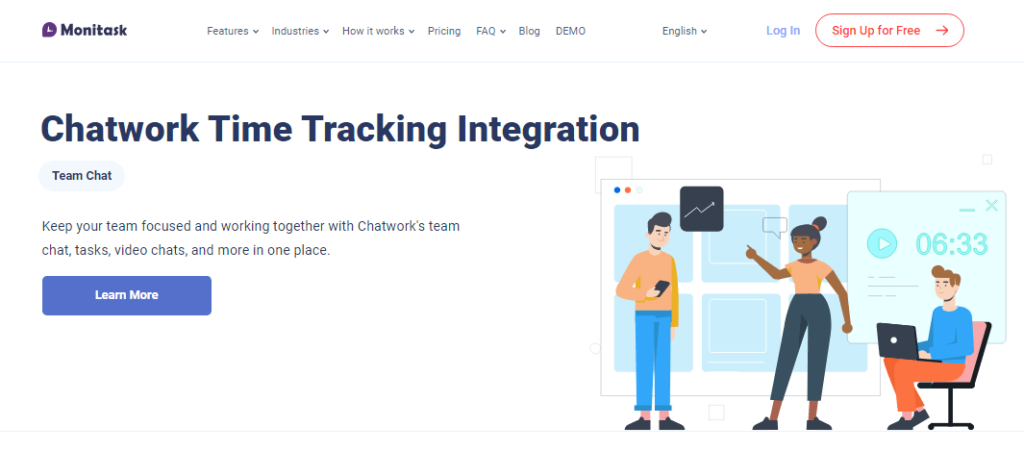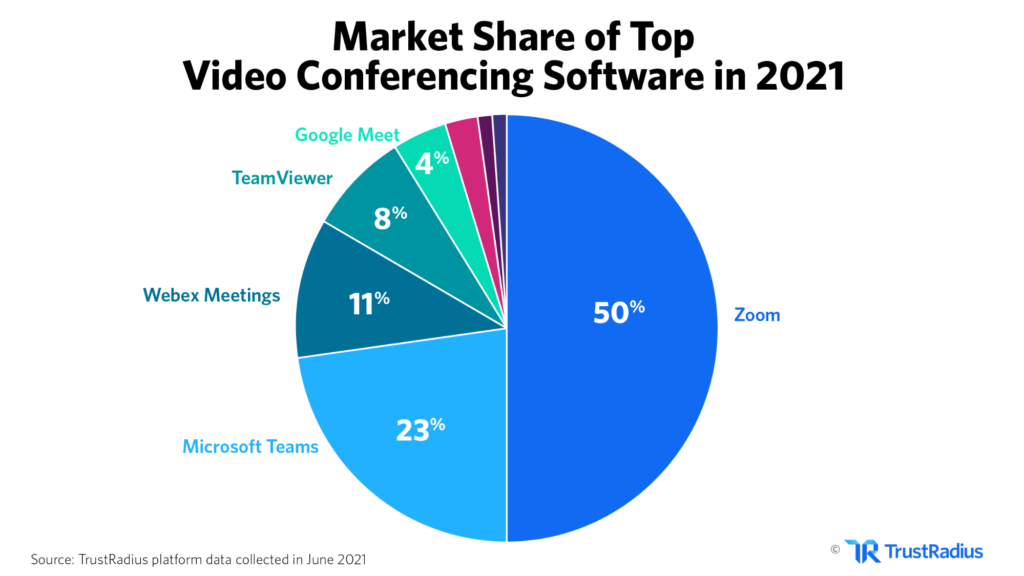The Expert Guide to Keeping in Touch With Remote Employees and Hourly Contractors

In this era of apparent “overcommunication”, we can miss the essence of effectively transmitting our messages. Is it professional to add emojis? How often should you check-in with remote employees and hourly contractors? And more crucial, what is the best way to do it?
As remote work continues to become a more popular working practice, companies have adopted remote work practices with increasing frequency as technology-driven solutions have enabled communication from anywhere. However, it’s not that simple! You will need the right tools and strategies in place to make it work. In this blog post, we will discuss some of the best tips for staying in touch with them effectively, regardless of where they are located. Let’s get started!

Over the past decade, there has been a dramatic transformation in the way that people work. Advances in technology have made it easier than ever before to offer remote working opportunities and hire hourly contractors and remote employees from all over the world. In fact, according to predictions by Zippia, by 2025 it is estimated that 36.2 million Americans will be working from home – a trend that promises to continue well into the future!

If we assume these numbers will stay stable over time, the future of work seems to be remote or at least, will adopt a hybrid model. This working model can be regarded as new, but not entirely so as it has been used as a means to expand businesses across countries. How? The answer relies on freelancing.
Freelancers have long been hailed as the most successful example of remote working feasibility
Bloggers, writers, content creators, and all creatives play an essential role in demonstrating that one can be successful working remotely from any corner of the world. Freelancing is the spearhead in the rise of the work’s hybrid system as it opened the door to hiring full remote employees. And now, businesses are even implementing remote work settings for good.

As the above quote remarked when you decide to step up as a remote boss or manager, you will need a long-term strategy, and what’s one of the most crucial elements in this plan? Communication! Communication comes from the Latin word “communicare” which means to share or have something in common.
Communication is defined as the process of understanding and sharing a message, piece of information, or even feelings

And, a heads up! Finding a common ground is the goal to keep in mind when communicating with your remote team/employees or hourly contractors. Therefore, it’s important to know how to keep in touch with your remote workforce and ensure that everyone is on the same page.
The Expert Guide to Keeping in Touch With Remote Employees and Hourly Contractors
From setting expectations to building relationships, this is the KNOW-HOW of keeping in touch with your remote workforce. Keep reading!
Establish Clear Expectations
First of all, the expectations put on your remote workforce have to be crystal clear, with no gray areas. Inevitably, you need to ensure that your remote employees and hourly contractors understand their job descriptions, the expectations from the company, what their working hours are, and of course any rules and regulations.
One of the best ways to communicate expectations is through onboarding programs. A comprehensive onboarding process covers all those details in a very well-thought-out plan. This will save time, money, and energy. Read our blog on the best practices for employee onboarding here.
Having in place a solid remote onboarding program is crucial to prepare your remote workforce to fulfill their job responsibilities with flying colors.
Yet, we mostly place these expectations on remote workers. And, what about their expectations? Values such as trust and respect must be in place for both parties. It is essential to establish a reliable feedback loop between the company and its employees—especially when it comes to remote workers. This allows you to have open dialogue, gain insights from your team, and build lasting relationships.
Stay Connected with Adequate Communication Channels
As communication is key for any professional relationship – especially when it comes to remote working, you need to find the communication tool that best work for you. Do you need to know where your hourly contractors are? How much time do they use to complete a task? Or, maybe you need a tool with a good video chat option for instant calls or quick updates.
In this case, you will need employee management software such as Monitask! With Monitask, you will be able to easily track employees’ progress, monitor their working hours, and manage invoices. Also, with the available integrations, you can do a lot more! For example, Monitask integrates with Chatwork, which is an all-in-one communication and collaboration platform, designed specifically to enable remote teams to stay connected more effectively.
Monitask and Chatwork provide an efficient platform that blends remote team communication with time tracking in one centralized location

Embrace the Power of Video Conferencing
Video conferencing is also a good way to get in touch with remote employees and hourly contractors. In today’s ever-increasingly digital world, video conferencing is quickly becoming an invaluable tool for businesses.
With video conferencing, companies can keep in touch with their remote employees and hourly contractors while still getting the most out of their collaboration
Being able to have video conferences over Skype or Zoom means that information can be shared quickly and securely between team members. As well, creates an environment of trust among co-workers and cross-functional teams.
With video conferencing, teams can:
- Effectively communicate ideas and strategies
- Establish goals and objectives
- Share updates
- Train staff on new programs and deadlines without having to pay for a physical location for training seminars
Video conferencing offers real-time conversations, which is a great tool for check-ins and one-on-one meetings. As well, it is an incredibly cost-effective way to connect with your remote employees or contractors. Not to mention the impact it can have on team morale when you see each other’s faces!
Currently, the video conferencing market is dominated by Zoom, but there are other options out there too such as Google Meet, or Skype. Below, you can see a graph on the market share of video conferencing:

These tools offer a great way to keep in touch with your remote team and effectively communicate without having to be physically present. Make some research on how you can integrate some of these tools with other software, so you can make the most out of your video conferencing experience.
Monitor Progress in Real-Time
Real-time activity tracking allows managers to gain insights into how their remote workforce is performing. For example, with Monitask you can easily track key performance indicators (KPIs) of your team and assess employees’ productivity levels. This helps managers identify areas where improvements are necessary and avoid possible problems before they arise.
Moreover, real-time monitoring also provides the opportunity for direct feedback from the manager and corrections when needed; hence, improving communication between employers and employees and building trust among them.
Don’t Neglect a Good File Sharing / Cloud Software
Communication is also about having all the resources everyone needs to do their job. Common ground and be on the same page, remember?
Cloud file sharing provides an efficient way to share documents, ideas, and tasks with remote personnel as well as helps to stay coordinated by providing real-time file synchronization, automatic file version handling, and multi-device file access.
Some common file-sharing and cloud-storage platforms include:
- Dropbox
- Google Drive
- Microsoft OneDrive
- Box
- Apple iCloud

This type of file sharing also makes it easier to store large files or multiple documents securely. What if you need your hourly contractor to send you information right on the spot? With file-sharing software all parties involved have access to them from anywhere there is an internet connection.
Email: The Good Old Trusty!
Email remains one of the most reliable and cost-effective channels for communications when it comes to reaching out to remote employees and hourly contractors. It is often seen as the go-to method for engaging dispersed team members and ensuring that everyone is on the same page.
Despite email being a relatively older technology, its popularity among businesses continues to remain strong due to its easy implementation and user-friendly interface
It also supports almost any file type which makes email ideal for sending all sorts of resources, training guides etcetera that help connect employees, especially those working remotely, with important documents and information that they need to continue working efficiently.
Lastly, email helps increase communication efficiency which ensures that deadlines are met more quickly and effectively, thereby enhancing organizational productivity.
Schedule 1:1 Meetings
Besides all the savvy and tech tools, 1:1 meetings between managers and remote employees or hourly contractors can be a powerful way to stay in touch and maintain an active connection. By setting a regular schedule that works for all involved, the manager can ensure that these team members are kept up to speed on current projects, have the opportunity to voice any concerns they may have, and receive the support they need to succeed in their roles.

Furthermore, it is also an excellent opportunity for managers to build relationships with remote employees and hourly contractors, which can help to create a productive workplace culture regardless of job settings or employee locations. 1:1 meetings are an efficient way to make sure everyone feels valued and connected within the organization.
Remote Employees vs. Hourly Contractors
As remote work becomes increasingly popular with businesses, there is a growing need to understand the potential advantages and disadvantages associated with remote employees and hourly contractors. Especially, when it comes to payment and benefits.
Time Basis
Generally speaking, remote employees are contracted as part of a company’s full-time staff and often have access to company benefits, while hourly contractors perform specific project-based remote work on an as-needed basis.
Wages
When it comes to wages, remote employees are typically paid an annual salary and have the option to receive additional compensation through performance-based bonuses. On the other hand, hourly contractors are usually paid a flat rate for each hour worked and may not be eligible for benefits such as health insurance or retirement plans.
Policy
When it comes to maintaining ethical practices, remote employees and hourly contractors must follow the same standards as any in-person employee. This includes following any internal policies that may be set in place by the organization or government regulations such as those related to data security and privacy.
Monitoring
It is also important for managers to periodically monitor remote employees and hourly contractors to make sure they are ethically doing their job. This can include tracking their time worked, verifying the accuracy of all data submitted, or reviewing any work that has been completed by the employee.
Choosing one or another is up to the needs of your company. On one hand, remote employees come with the benefit of stability and continuity in your organization. On the other hand, hourly contractors provide more flexibility for specific projects that require extra manpower without having to commit to long-term staff commitments.
Ultimately, both types of employees can be incredibly beneficial for businesses looking to stay competitive in the modern workforce. Therefore, it is essential to assess first which one fits best for you.
Final Considerations
The workplace is constantly evolving, and in recent years, remote work has become increasingly popular. More and more companies are relying on virtual teams to get the job done. With this shift has come a need for effective remote communication strategies, especially when it comes to keeping in touch with remote employees and hourly contractors.
With the use of appropriate tools such as Monitask, you can easily streamline your remote team management efforts. From effective communication to monitoring progress in real-time. By keeping this guide in mind, employers can establish an effective system that allows them to create strong relationships with their remote employees and hourly contractors while maintaining ethical standards.
Happy communication!
-The Monitask Team


